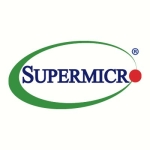The most valuable feature that the B-Series has is related to the structure and architecture of the solution because in these solutions, you are using fabric interconnect as an interconnect device. The beauty of fabric interconnect is that it can work as in-house mode.
Fabric interconnect is the main component in the UCS solution. Fabric interconnect can act as two modes. One is in-house mode, and the other one is switching mode. The recommended one is in-house mode. When it works in in-house mode, it means that it won't process any storage, like flagging things, zoning, etc. It won't process Spanning Tree Protocol either. It will just proxy everything to the higher switch.
For example, if you have storage network traffic, the fabric interconnect won't process your flagging. It will make a proxy, and send it to your NPIV storage switch. It acts literally as in-house, and that makes the solution and architecture very easy, convenient, and scalable.
The other important feature is the switch technology that Cisco uses on their chassis. It's not like those of other brands. The beauty of Cisco is that with traffic interconnect, your network and storage won't come down to the chassis level.
It will stop at the fabric interconnect, and the traffic between the fabric interconnect and the chassis acts very similar to the fixed technology that Cisco uses between 2K and 5K. This means that the same architecture and the same technology that we use between 2K and 5K is used between the fabric interconnect and the IO module that's used at the back of the chassis.
This means that when you are using the IOM input/output module, the IOM module on the back of the chassis will not be like a regular switchboard. It will be just IO. So, this means that it is scalable. You can add as many chassis as you want to this whole solution, and you can remove them. You can move one chassis to another chassis. You can move one server from chassis one to chassis eight or chassis seven. You can have a lot of clusters. You can have a lot of failovers over the whole package.
Recently, with the new chassis, UCS X-Series, that Cisco recently introduced to the market, it is much more scalable.












